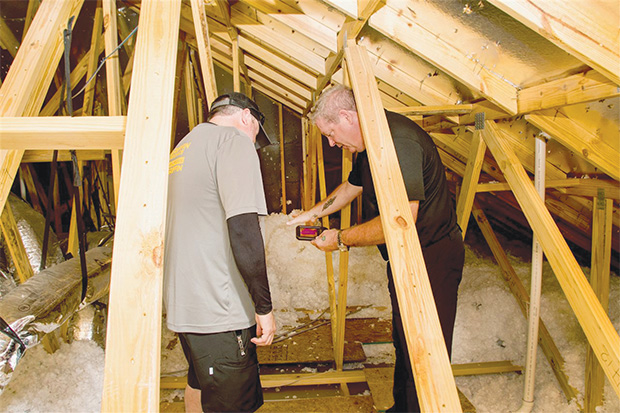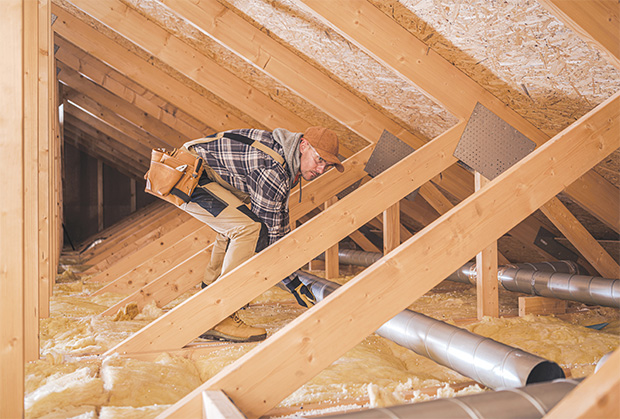The arrival of autumn is a good time for homeowners to replace batteries in their smoke detectors and carbon monoxide alarms. And as winter approaches, it’s also a good time to make sure that a home is ready to support indoor air quality.
Given that Americans, on average, spend 90% of their time indoors, the air inside a home should not be taken for granted. As October is Indoor Air Quality Month (though air quality can be top of mind all year), the following tips can help support indoor air quality, while also helping to boost comfort and conserve energy bills.
DON’T OVERLOOK THE ATTIC
An average home loses about 20% to 30% of the air that moves through the duct system due to leaks, holes and poorly connected ducts. In addition to allowing air moving through
the ducts to escape, these gaps can reduce energy efficiency and lead to higher energy bills. Such breaches can allow dust and particulates in the attic to infiltrate and circulate throughout the home.
CARE FOR THE AIR
Regular service of a home’s HVAC equipment can help detect problems that may reduce indoor air quality. An Owens Corning Air-Care™ contractor can inspect a home’s attic using tools that may suggest a problem with indoor air quality. For example, thermal imaging technology allows the contractor to visually show the homeowner where energy is being lost and areas where pollutants or contaminants may be entering ductwork.
ASSURE ATTIC VENTILATION
Ventilation supports the flow of air into and out of the attic space. Balanced intake and outtake vents in the attic along with proper air sealing support effective moisture management throughout the home.
MANAGE MOISTURE
Activities in the home like cooking and showering can raise humidity levels in the home. Turning on cooking vents and bathroom vents helps draw moisture out of a home’s conditioned space. Beyond creating potential conditions for mold or mildew to grow, allowing moisture to sit on metal surfaces such as ductwork and other HVAC equipment can cause them to rust and corrode.
INSULATE UNCONDITIONED SPACES
The North American Insulation Manufacturers Association has reported that 90% of homes are under-insulated, wasting money, energy and decreasing comfort. Adequate levels of insulation can contribute to a more comfortable indoor environment.
STAY ALERT TO SIGNS OF A POTENTIAL PROBLEM
Several clues can suggest that a home’s ductwork may be reducing indoor air quality. Signs of a problem may include musty smells, mold or mildew around vents, condensation on HVAC equipment, hot or cold spots throughout the home, and an increase in dust in the indoor environment.
This article is courtesy of Brandpoint.


